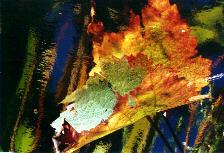composed 1836-1849 - dedicated to Miss Mary Potts
Drei Stücklein: Nicht
schnell, mit Innigkeit - Sehr rasch - Frisch (1839)
Albumblätter: Ziemlich
langsam (1841) - Schnell (1838) - Ziemlich langsam, sehr gesangvoll (1836)
- Sehr langsam (1838) - Langsam (1838)
Novelette, Lebhaft (1838)
Präludium, Energisch
(1839)
Marsch, Sehr getragen (1843)
Abendmusik, Im Menuettempo
(1841)
Scherzo, Lebhaft (1841)
Geschwindmarsch, Sehr markiert
(1849)

In the meantime Schumann and Clara had
married against the wishes of her father. They resided in Dresden and had
several children. It was the time of the Revolution of 1848. Schumann compiled
the best of his pieces, some of which he had written earlier, and
some for which he had not found a use, into a 14-part collection. The first
three pieces are examples of his art of characterization. From a simple
triadic motif emerges a light, quizzical piece in major, followed by an
energetic rhythmically off-kilter piece in minor, which is then countered
by lively E major. In his diaries, Schumann describes these as Nocturnes:
“Composed some pretty things, the first two Nocturnes in A major, on
December 18, 1838.” The second series, a group of five Albumblätter
introduces the famous theme in F-sharp minor, to which Clara Schumann and
Johannes Brahms later wrote variations. In no. 5 simple, dreamy whole-tone
intervals transform—rushing in B minor, dancing in A-flat major, depressed
in G-sharp minor, and ending in the lightness of E-flat major in no. 8.
Noveletten relates a musical story, and
the cycle concludes utilizing larger musical forms. As in Rachmaninov’s
Preludes in B-flat minor, Schumann employs various dances. The mercilessly
static March in D minor suddenly changes into a minuet, is followed by
a incisive scherzo and a breathless, fantastic march, and combines in a
short time and space a myriad variety of colors, forms, and dances.
© Franz Vorraber